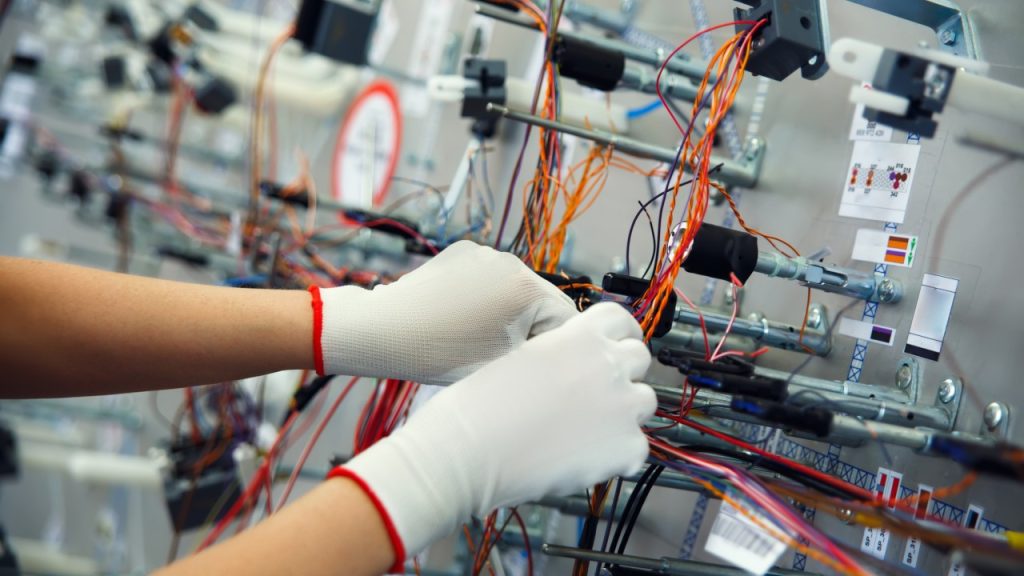Wire harnesses form the backbone of numerous electronic systems, serving as the central nervous system in automotive, aerospace, and consumer electronics. They are crucial for consolidating and protecting wires against adverse conditions while ensuring consistent electrical flow. As technology evolves, the demand for more sophisticated and efficient wire harness systems grows, prompting manufacturers to seek innovative solutions that streamline production and enhance product reliability.
Advancements in wire harness manufacturing also focus on reducing environmental impact and improving operations’ scalability, thereby supporting sustainable industry practices. These efforts are pivotal in adapting to the increasing complexities of modern electronic applications.
Innovative Materials: Driving Performance and Durability
One of the significant advancements in wire harness production is the development of new, high-performance materials. These materials are designed to withstand extreme environmental conditions such as high temperatures, moisture, and chemical exposure. For instance, manufacturers now use advanced thermoplastic and thermoset compounds that provide enhanced durability and flexibility. These materials improve the longevity of wire harnesses and reduce their overall weight, which is particularly beneficial in the automotive and aerospace sectors, where efficiency is paramount.
Additionally, these innovative materials contribute to product environmental sustainability by being more recyclable and less toxic during disposal. This approach meets regulatory compliance and aligns with global sustainability goals.
Automation in Production: Increasing Precision and Reducing Costs
Automation has revolutionized the production of wire harnesses. Automated cutting, stripping, and crimping machines have significantly increased the speed and accuracy of wire harness assembly. These machines can handle complex wiring configurations, ensuring that each connection is secure and consistent. Furthermore, automation reduces the likelihood of human error, which is crucial in applications where safety is critical.
Additionally, robotic assembly lines have helped reduce labor costs and improve the scalability of production processes. Robots are equipped with advanced sensors and vision systems that allow for precise placement and routing of wires, further enhancing the quality of the final product.
Integration of Advanced Testing Protocols
Quality assurance is paramount in wire harness production, as defects can lead to failures in critical systems. Manufacturers have integrated advanced testing protocols into their production lines to address this. These tests include electrical continuity, insulation resistance, and mechanical stress tests. By employing such rigorous testing standards, manufacturers can ensure that each wire harness meets the strictest performance criteria before it leaves the factory.
Moreover, some manufacturers have started using real-time monitoring systems during the testing phase. These systems use data analytics to predict potential failures and provide insights into the longevity and performance of wire harnesses under different conditions.
Customization: Meeting Specific Client Needs
As wire harness applications expand, the need for customized solutions becomes more evident. Manufacturers are now offering bespoke wire harness designs tailored to specific client requirements. This approach involves close collaboration with clients to understand their unique needs and constraints, ranging from space limitations to particular electrical specifications.
Custom wire harness production also incorporates rapid prototyping technologies, allowing manufacturers to produce samples for clients to test and validate quickly. This capability speeds up the development process and ensures that the final product precisely meets the client’s specifications.
Sustainability in Wire Harness Production
Sustainability has become a key focus in wire harness production, with companies increasingly prioritizing eco-friendly practices. It includes using recyclable materials and designing products that are easier to dismantle at the end of their lifecycle. Additionally, manufacturers are reducing waste by optimizing their production processes and using software that calculates the most efficient use of materials.
Furthermore, there is a growing trend towards reducing the carbon footprint of manufacturing operations by utilizing renewable energy sources and improving energy efficiency throughout the production facilities. These initiatives not only contribute to environmental conservation but also appeal to eco-conscious consumers and companies.
The Future of Wire Harness Production
Its future looks promising, with continuous innovations aimed at improving efficiency, reliability, and sustainability. Integrating new materials, automation, advanced testing, and customization are setting new standards in the industry. As manufacturers continue to embrace these advancements, they are well-positioned to meet the growing demands of various sectors, ensuring that wire harness systems continue to evolve in line with technological progress.
Wire harness manufacturing is a field ripe with innovation opportunities. By staying at the forefront of these developments, manufacturers can enhance their operational efficiency and contribute to advancing modern technology. Embracing digital transformation, such as integrating IoT and AI technologies, offers further potential to optimize production processes and improve quality control in real time. As the industry moves forward, it remains essential for manufacturers to adapt and innovate continuously to provide solutions that not only meet but exceed the evolving demands of the market.

